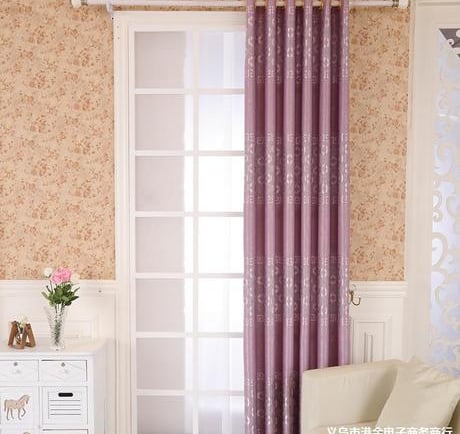High-Performance Curtain Fabrics: Enhancing Durability, Light Blocking, and Thermal Insulation
11/29/20244 min read


Understanding High-Performance Curtain Fabrics
High-performance curtain fabrics are meticulously designed materials that offer enhanced durability, light blocking, and thermal insulation compared to standard curtain fabrics. These specialized fabrics are engineered to meet the demanding needs of both residential and commercial environments. They are formulated from advanced materials, mainly polyester blends, which provide exceptional strength and resistance to wear and tear. The unique characteristics of high-performance fabrics make them not only long-lasting but also effective in optimizing energy efficiency and mood within a space.
The technology employed in creating these fabrics often includes various treatments and weaves that bolster their performance. For instance, certain high-performance curtain fabrics are treated with water-resistant coatings, which protect them from moisture-related damage, making them suitable for locations like kitchens or bathrooms. Additionally, reflective coatings improve their ability to block UV rays and reduce glare, thereby protecting interior furnishings and maintaining comfortable light levels indoors.
When selecting high-performance curtains, it is vital to consider various factors that pertain to specific needs. These factors include the intended usage of the space, the amount of natural light it receives, and the overall environmental conditions, such as humidity and temperature fluctuations. For example, curtains positioned in sunny south-facing rooms may require fabrics with superior UV blocking capabilities to maintain their color integrity and functionality over time. Furthermore, understanding the thermal insulation properties of the fabric can lead to better energy savings, as these materials help to regulate indoor temperatures by minimizing heat loss during winter months and keeping spaces cool in the summer.
In summary, high-performance curtain fabrics not only provide aesthetic appeal but also incorporate a diverse range of beneficial characteristics that enhance their functionality, making them an ideal choice for various applications.
The Importance of Durability in Curtain Fabrics
When selecting curtain fabrics, durability emerges as a vital consideration, particularly for areas subjected to high traffic or significant sun exposure. Curtains encounter a multitude of stressors that can affect their longevity, including sunlight, moisture, and general wear and tear. The impact of these factors necessitates the use of high-performance curtain fabrics that are specifically designed to withstand such conditions. Effective durability ensures that your curtains will maintain their appearance and functionality over time, thus making them a wise investment for both residential and commercial settings.
Sunlight is one of the leading causes of fabric deterioration. Prolonged exposure can lead to fading, weakening of the fibers, and eventual disintegration of the fabric. High-performance curtain fabrics often incorporate UV resistance technology, enhancing their ability to combat these harmful effects, ensuring that colors remain vivid and the structural integrity is preserved. Similarly, moisture can lead to mold and mildew buildup, particularly in humid environments. Conclusively, selecting moisture-resistant fabrics can not only prolong a curtain's lifespan but also support a healthier indoor atmosphere.
Beyond environmental stressors, the physical wear and tear from frequent usage can also compromise curtain integrity. High-traffic areas, especially those with kids or pets, require fabrics that can tolerate the inevitable rough handling. Durable curtain fabrics are engineered with robust fibers that resist fraying and tearing, thereby minimizing the need for replacements. Investing in such materials can yield significant long-term cost savings, as these fabrics require less frequent replacement and maintenance.
Examples of durable fabric options include polyester blends and high-denier woven polyester, both known for their resilience and ease of care. These fabrics also tend to retain their thermal insulation properties, which can further contribute to energy savings. By prioritizing durability in your curtain fabric selection, you not only ensure the longevity of your window treatments but also enhance the overall look and functionality of your space.
Light Blocking and Privacy Features
High-performance curtain fabrics are designed with advanced light-blocking capabilities, making them an essential choice for environments where light control and privacy are paramount. These curtains serve not only to enhance the décor but also significantly reduce light infiltration, creating a more conducive atmosphere for rest, work, or entertainment. For instance, blackout curtains utilize a specialized lining that effectively prevents external light from penetrating, thereby fostering a dark environment ideal for bedrooms and home theaters.
One popular option is the use of layered constructions, where multiple fabric types are combined to enhance light blockage while still maintaining aesthetic appeal. A common combination involves a light-filtering top layer paired with a blackout lining, allowing homeowners to switch between natural light and complete darkness based on their needs. This versatility is particularly valued in spaces such as offices or nurseries, where light management directly impacts productivity or comfort.
The effectiveness of these light-blocking technologies extends beyond mere functionality; they also contribute to energy efficiency in the home. By minimizing the need for artificial lighting during the day, curtains designed with thermal insulation qualities can complement their light-blocking features. Moreover, high-performance fabrics are available in a variety of colors and textures, ensuring that users do not have to sacrifice style for practicality. This array of aesthetic choices allows for seamless integration into any interior design theme while ensuring optimal light management.
Incorporating high-performance curtain fabrics with advanced light-blocking features ultimately enhances the quality of living spaces, allowing individuals to curate their desired level of privacy and comfort in an effective manner.
Thermal Insulation Benefits of High-Performance Curtains
High-performance curtain fabrics play a pivotal role in thermal insulation, serving as a barrier that significantly affects energy efficiency in both residential and commercial spaces. By regulating room temperature, these curtains can notably impact heating and cooling costs throughout the year. The science behind thermal insulation in high-performance curtains lies in their unique construction and the materials used. Fabrics equipped with thermal backing or those made from specialized synthetic materials can trap air pockets, creating an insulating layer that minimizes heat transfer.
When selecting curtains, it is essential to consider the weave and material. Thick, densely woven fabrics tend to have better thermal properties than thin or loosely woven options. For instance, polyester blends and heavy cotton are often recommended for their ability to block outside temperatures effectively. Additionally, the presence of interlinings, which are inserted between the outer fabric and the lining, can further enhance the insulation properties by increasing the curtain’s thermal resistance.
Another important factor is the color of the curtains. Darker colors can absorb more heat, which can be beneficial in colder months, while lighter colors reflect light, keeping spaces cooler during the warmer months. It is also worth noting that the way curtains are hung can contribute to their effectiveness in thermal insulation. Ensuring that curtains are mounted closer to the ceiling and arranged to cover the entire window frame minimizes gaps through which air can escape or enter.
Choosing high-performance curtains not only aids in personal comfort but also contributes to environmental sustainability. By reducing the need for artificial heating and cooling, these fabrics decrease energy consumption, translating to lower utility bills and a smaller carbon footprint. Therefore, investing in thermal insulation through curtains can have lasting benefits for individuals and the environment alike.
Curtains&Fabrics
Design,production,sales,service in curtain fabrics&curtians.
Quality
Products
sales01@anytextile.com
+8615968501933
© 2024. SHAOXING LEYAO IMPORT AND EXPORT CO.LTD All rights reserved.
